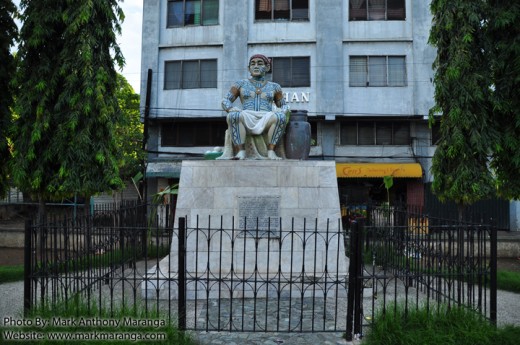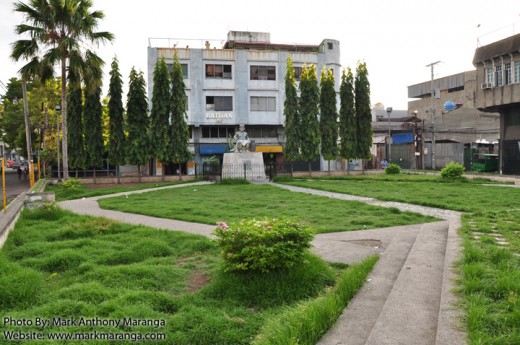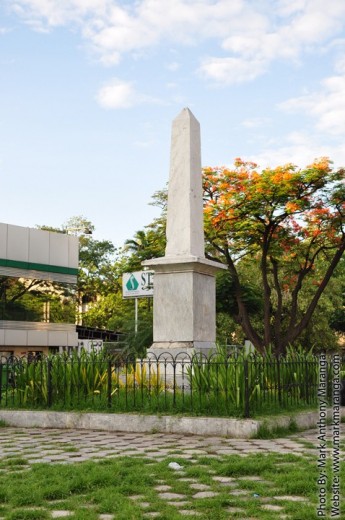Rajah Humabon was the first Filipino chieftain to embrace Christianity in the Philippines. He is regarded as the bravest and wisest man in the island of Cebu. When Ferdinand Magellan landed on Cebu on April 7, 1521, Sunday, Rajah Humabon made a blood compact with Magellan as a symbol of their newfound friendship. A similar ritual was done in Bohol during the Sandugo: Blood Compact between Miguel Lopez de Legazpi and Datu Sikatuna as a sign of friendship between the Spaniards and Filipinos.
Captivated by the noble teachings of Ferdinand Magellan, Rajah Humabon was converted to Christianity. The following Sunday morning (April 14, 1521) after the landing of Magellan, Rajah Humabon and his wife Humamai, and about 800 Cebuanos were baptized by Father Valderama. Rajah Humabon was given the name Carlos in honor of King Charles V of Spain and his wife Queen Juana after King Charles’ mother.
In remembrance of the occasion, Magellan gave Queen Juana an image of the Child Jesus as a gift, while a large cross was erected to mark the baptismal site.
Rajah Humabon is also known as Hamabar or Hamabad. He is the King and Lord of over eight chieftains and over 2,000 lancers. During his reign, Cebu was a depot and commerce site with nearby countries such as Thailand (which was named Siam during that time), China and Borneo, among others. This was apparent in the ornaments embellished on the bodies and clothes of Rajah Humabon and his people as well as the fine porcelains (or chinaware) used in the royal houses and court.
Magellan’s real mission was to sail to Moluccas, but when he entered the water of the Philippines, he decided for a side trip. When Ferdinand Magellan and his troops arrived in Cebu, they found Rajah Humabon at his royal residence, which is across the landing place in an open space. Magellan came face to face with Rajah Humabon to discuss friendship and other concerns. Christianization became a precedence, almost as the same priority as colonization for trade and resources. The delirious Magellan was very excited to impress the Datu with what Christianity can do to him and his people, making the Datu accept the conversion.
On April 28, 1521, Magellan’s troop voyage to Mactan, a nearby island of Cebu. The troop was engaged in a battle with Lapu-lapu, the native chieftain. This made Rajah Humabon lose trust to the Spaniards and turn into a retaliator. He ordered his people to kill all the Spaniards who remained in the island to avenge their rape of Cebu’s women during their entire stay. Rajah Humabon became the first Filipino to avenge the honor of women.
Because of Magellan’s death in the Battle of Mactan, Duarte and Barbosa became the two new fleet commanders. In a later event, Rajah Humabon invited the remaining Spaniards to a banquet. With less notice, the unwary guests found themselves at the mercy of Humabon’s warriors. Learning of the massacre, the Spaniards remaining in Cebu immediately left the island.
Rajah Humabon Park is located a couple of minutes away from Colon Street Marker: The oldest street in the Philippines, seconds away from the Cebu Metropolitan Cathedral and several minutes away from Fort San Pedro which served as a defense structure for the Spanish fleet in 1565, headed by Miguel Lopez de Legazpi.
This page is last updated on















It was like I am reading the history of Cebu. May I ask if you had an idea on how Magellan and Rajah Humabon communicate? In what dialect? How did they able to understand each other … Just getting curious. Thanks
Rajah Humabon and Magellan communicated with the help of interpreters aboard Magellan’s ship. These interpreters were believed to be part of the Southeast Asian Ethnolinguistic groups(similarity in language),captured by the Spaniards on the seas and made use of them on their travels.
Where are the heirs of Humabon nowadays? Can we trace these bloodlines today? Cebuanos should pay homage to the heirs of their king… They should be recognize and honored too just like the leaders we have in this century.